Understanding mechanisms of Polygonatum sibiricum-derived exosome-like nanoparticles against breast cancer through an integrated metabolomics and network pharmacology analysis
- PMID: 40547857
- PMCID: PMC12179076
- DOI: 10.3389/fchem.2025.1559758
Understanding mechanisms of Polygonatum sibiricum-derived exosome-like nanoparticles against breast cancer through an integrated metabolomics and network pharmacology analysis
Abstract
Background: Polygonatum sibiricum has a long history of medicinal and edible usages, and has attracted widespread attention from researchers due to its rich pharmacological activities. Research has found that plant-derived exosome-like nanoparticles (PELNs) have enormous potential in the field of biomedicine, such as serving as natural nanomedicines to treat diseases or as carriers for drug delivery. However, there are no studies on P. sibiricum-derived exosome-like nanoparticles (PSELNs) against cancer.
Methods: This work used ultracentrifugation to extract the PSELNs and characterized them using transmission electron microscopy (TEM), nanoparticle tracking analysis (NTA), and dynamic light scattering (DLS). Proteomics and metabolomics were used to analyze the components of the PSELNs, and the Herb database was used to screen for active metabolites. The OMIM and TTD databases were used to analyze active metabolites, and we further speculated that they may have anti-breast cancer (BC) activity. Network pharmacology was used to analyze the possible mechanisms of the PSELNs against BC, mainly including protein-protein interaction (PPI) network analysis for potential targets, gene ontology (GO) for analyzing biological processes, and Kyoto Encyclopedia of Genes and Genomes (KEGG) for analyzing related signaling pathways. After that, the related data of BC was retrieved from the GEO database, and the clinical expression and survival prognosis of the key genes screened by network pharmacology were analyzed by bioinformatics. Molecular docking and Molecular dynamics (MD) simulation were used to verify the binding of active metabolites in the PSELNs with their targets. Finally, the CCK-8 method was used to validate the inhibitory effect of the PSELNs on BC.
Results: Firstly, TEM, NTA, and DLS confirmed that the PSELNs were successfully isolated. Then, Proteomics identified 18 protein components from the PSELNs, including ATP synthase subunit alpha, protein Ycf2, and Mannose/silica acid binding lectin. Metabolomics identified 357 metabolic components from the PSELNs and further screened 23 active metabolites by oral bioavailability (OB), including Sedanolide, Baicalein, and 6-Gingerol, etc. By analyzing 23 active metabolites, it was speculated that the PSELNs may have pharmacological activity against BC. After that, network pharmacology was used to screen 23 key targets of the PSELNs against BC. KEGG and GO enrichment analysis showed that the MAPK signaling pathway, PI3k-Akt signaling pathway, and AMPK signaling pathway were involved in the anti-BC effect of the PSELNs. Through bioinformatics analysis of 23 key targets in BC clinical samples, it was found that, except for ESR1, which was significantly upregulated, CAV1, FGF2, and PPARG were all significantly downregulated. The expression levels of 4 targets were positively correlated with survival status. These 4 targets were validated by molecular docking and MD simulation with active metabolites in the PSELNs, and it was found that the binding of sedanolide and ESR1, Baicalein and PPARG, and 6-Gingerol and ESR1 can remain stable. Finally, The inhibitory effect of the PSELNs on BC cells (MDA-MB-231) was validated by the CCK-8 method.
Conclusion: This was the first time that the PSELNs have been studied against cancer. It was verified that they have anti-BC activity, and the mechanism may be related to targets such as ESR1 and PPARG, regulated by active metabolites in the PSELNs. This work laid a foundation and reference for more follow-up related research studies.
Keywords: Polygonatum sibiricum; bioinformatics; breast cancer; exosome-like nanoparticles; metabolomics; network pharmacology.
Copyright © 2025 Ming, Yang, Shang, Li, Ren, Wu, Zhang, Zhu, Chen and Liu.
Conflict of interest statement
The authors declare that the research was conducted in the absence of any commercial or financial relationships that could be construed as a potential conflict of interest.
Figures
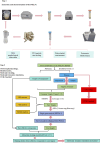

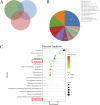
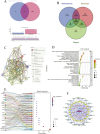

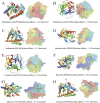

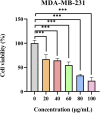
Similar articles
-
Elucidating the Mechanism of Xiaoqinglong Decoction in Chronic Urticaria Treatment: An Integrated Approach of Network Pharmacology, Bioinformatics Analysis, Molecular Docking, and Molecular Dynamics Simulations.Curr Comput Aided Drug Des. 2025 Jul 16. doi: 10.2174/0115734099391401250701045509. Online ahead of print. Curr Comput Aided Drug Des. 2025. PMID: 40676786
-
Systemic pharmacological treatments for chronic plaque psoriasis: a network meta-analysis.Cochrane Database Syst Rev. 2021 Apr 19;4(4):CD011535. doi: 10.1002/14651858.CD011535.pub4. Cochrane Database Syst Rev. 2021. Update in: Cochrane Database Syst Rev. 2022 May 23;5:CD011535. doi: 10.1002/14651858.CD011535.pub5. PMID: 33871055 Free PMC article. Updated.
-
Cost-effectiveness of using prognostic information to select women with breast cancer for adjuvant systemic therapy.Health Technol Assess. 2006 Sep;10(34):iii-iv, ix-xi, 1-204. doi: 10.3310/hta10340. Health Technol Assess. 2006. PMID: 16959170
-
Integrated network pharmacology and experimental validation reveal EGFR/p53/Bcl-2-mediated anti-hepatocellular carcinoma effects of Zedoary Turmeric Oil.J Ethnopharmacol. 2025 Jul 3;352:120241. doi: 10.1016/j.jep.2025.120241. Online ahead of print. J Ethnopharmacol. 2025. PMID: 40615101
-
Home treatment for mental health problems: a systematic review.Health Technol Assess. 2001;5(15):1-139. doi: 10.3310/hta5150. Health Technol Assess. 2001. PMID: 11532236
References
LinkOut - more resources
Full Text Sources
Research Materials
Miscellaneous

